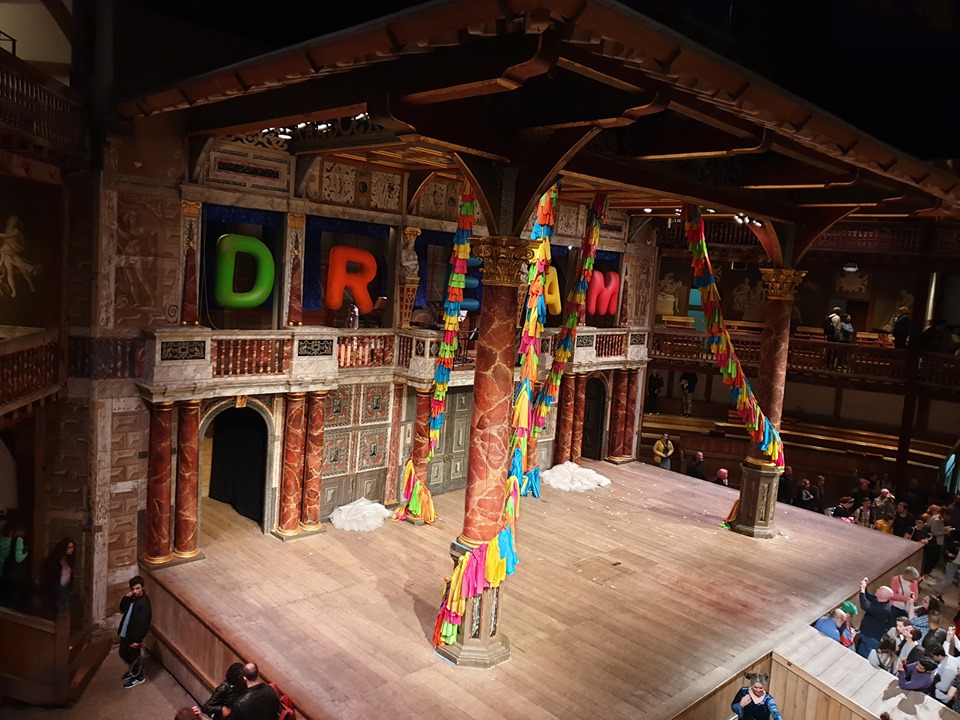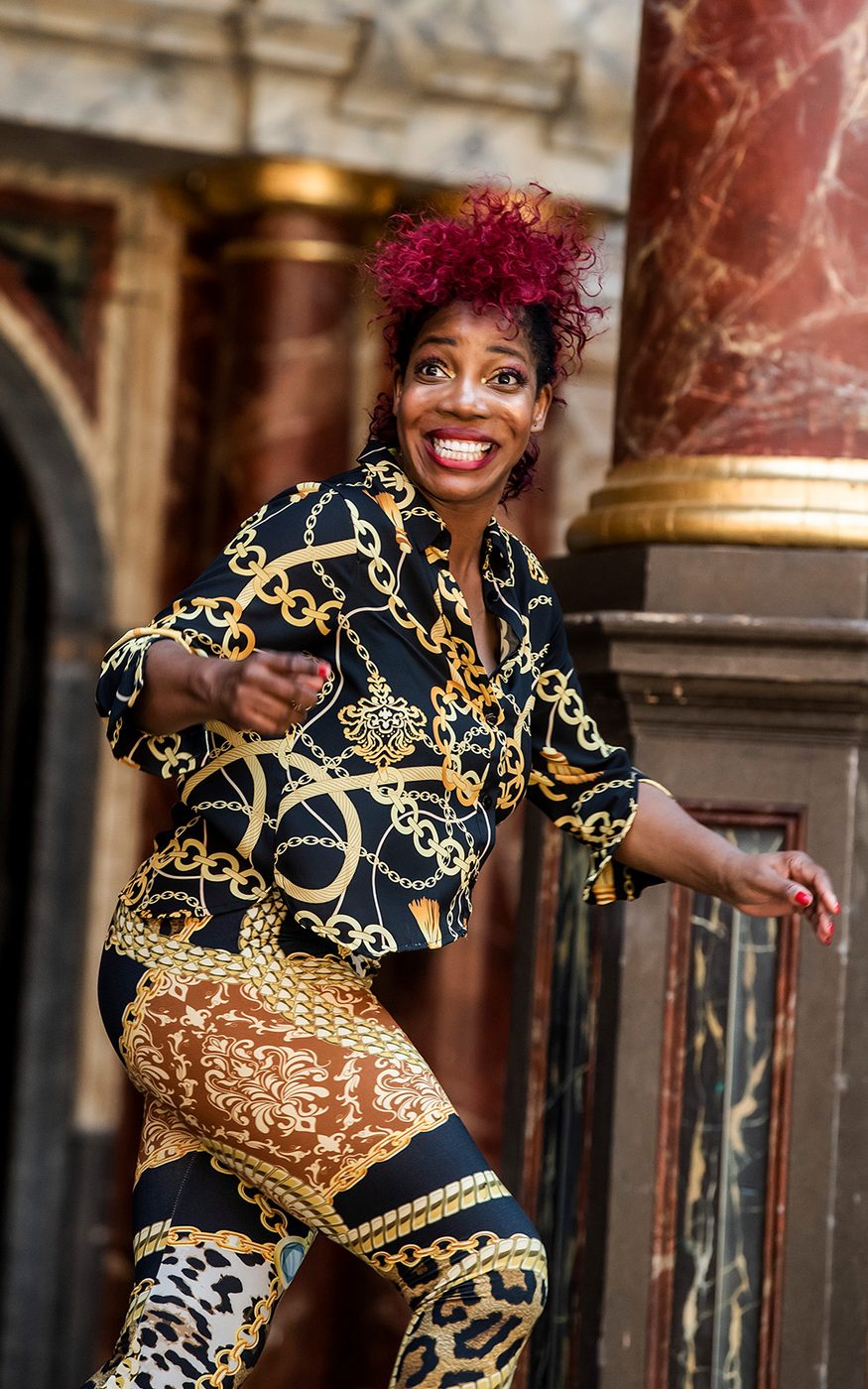Part of my effort to see every Shakespeare play.
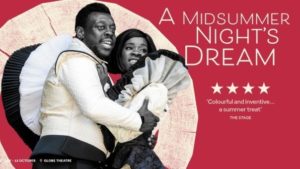
I pitched The Globe to my friends as “this theatre that was made by a mad American who decided to recreate a sixteenth century theatre in its entirety and then put on Shakespeare plays as they would have been performed then, complete with audience participation and dance numbers”. They agreed to come to the midnight matinee of Midsummer Night’s Dream.
And it was, uh, not quite as Shakepeare would have performed it, though I imagine if he had had the budget it wouldn’t have been too far off. I wasn’t the only one who thought it a bit much:
“The entire show is pitched somewhere between a first-week freshers’ party and the birthday celebration of a really spoilt five-year-old. There are piñatas, streamers, glitter face paint, pink hair, loads of deely boppers, audience interaction on the level of a Christmas show and giant balloon letters. ” – BritishTheatre.com
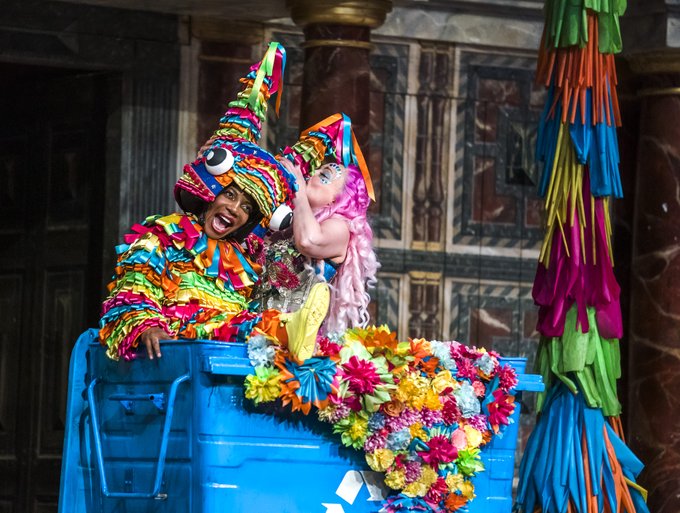
Midsummer Night’s Dream is a fantasy story, with two lovers running off to the woods to be together and getting caught up in a lover’s tiff between the King and Queen of the fairies. Love potions are pulled out, identies are mixed up and amid it all, six trademen are trying to practice their amateur dramatrics to be performed at the upcoming wedding. It is ridiculous, it is touching, and it is very funny, and remains one of Shakespeare’s most performed plays.
And perhaps because of that, Midsummer Night’s Dream is the only Shakespeare play that I had in fact seen before starting this project, though my memories of it are very dim (it was an outdoor performance, and I was eight years old, and spent much of the time sitting in a pillow feeling very uncomfortable). Nonetheless, I was still fairly ignorant of what happens and there were quite a few changes to the play that I could not appreciate until looking up the reviews afterwards, particularly of note:
“One of several inspired choices by Holmes is the way the character of Puck is shared around the cast, adding momentum to his sometimes sluggish soliloquies and laughs where often there are none. He also gets an audience member to play Starveling, turning this normally insignificant mechanical into a star turn and adding a useful foil to the buffoonery of Bottom (a show-stealing Jocelyn Jee Esien).” – Time Out
I didn’t actually realise that the role of Puck had been dished out among several people until reading this review afterwards – I just thought there were a band of fairies in the play and Puck was the famous one. I suppose that as one of Shakespeare’s best known plays, directors are able to take risks and assume their audience will understand what is being played with, but I personally was just a bit lost.
However, please do not take this as a negative review. I very much enjoyed this performance. The Hackney Colliery Band were the orchestra, and opened with their own ska performance with tuba, drums, trumpet, trombone and saxophone. The two lovers at the centre of the comedy were very good, if very eccentrically dressed. It’s an extremely high energy performance, with all of the actors hurling themselves around stage, into the audience, towards each other, on the floor, etc., with the exception of the Duke of Theseus/Oberon, who is played by an actor in his seventies, I think, and spent most of his time standing in a costume that sadly I can find no publicity photos of but which made him look like some kind of psychedelic oyster.
We just can’t get this music out of our heads… 🎺
— Shakespeare’s Globe (@The_Globe) July 26, 2019
Have you seen our ⭐⭐⭐⭐ #GlobeDream? Discover more 👇https://t.co/RIsObrHGl8 pic.twitter.com/551IvLDmae
The main plot however, was quite overshadowed by the mayhem of the “rude mechanicals” trying to rehearse their play. As in Henry IV Part 2, Shakespeare in creating the role of Bottom created a role for a great comic actor and wow, the woman who played Bottom was amazing. Her comic timing was genious. For this performance, they picked a random member of the audience to play one of the players, who was apparently not briefed beforehand, and performed the play around him. They did his best to direct him and give him lines, but there was one moment where Bottom rushes on stage, head transformed into a donkey’s head, and all of the bickering performers run away, while Steve (I think he was called) continued to stand on the edge of the stage.
Bottom: “Why do they run away?”
[Sees Steve]
Bottom: “Run away, Steve!”
Steve then suddenly looked terrified and ran away out the back of the stage, before being sent, head hanging, back into the audience by the cast members. I cried with laughter.
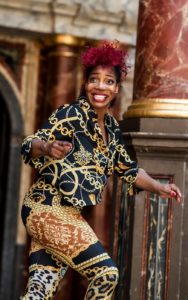
Steve also ended up riding some bicycle powered machine at the end that I can’t remember the purpose of, but personally I was more taken with Titania’s buggy that she enters the yard in for about twenty seconds for no particularly good but quite visually impressive reason:
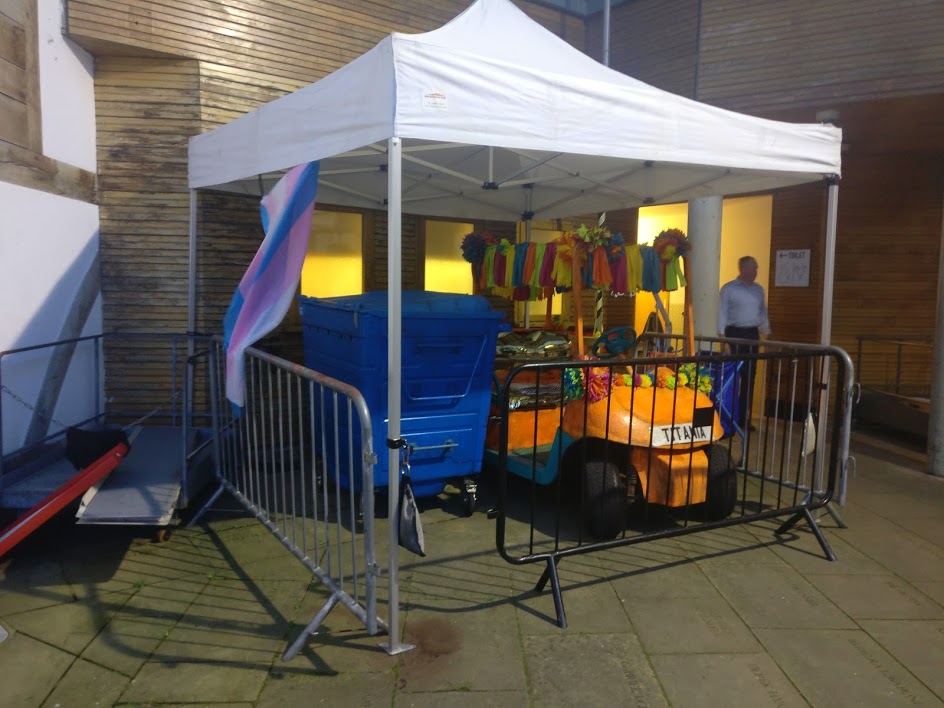
The midnight matinee performances were set up as a gimmick that went so well that The Globe kept doing them. Practically, because everyone turns up at midnight fairly sloshed to begin with and keeps drinking, it means that the groundlings in the yard are pretty well-disposed to be entertained and inclined to express their entertainment loudly, which made for a cracking atmosphere. They laughed, they booed, they ahhed, which kept me going at the play isn’t cut short for the late hour. It did mean I got home at 4am, so I don’t think I will be repeating it, but I’m glad I went.
I think I may have to go and see another Midsummer Night’s Dream though. That passed by in a bit of a, well, a dream…
